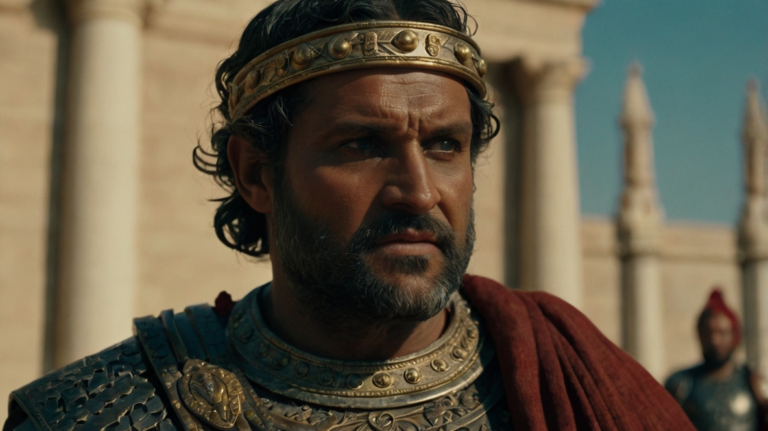
Hannibal Barca: The Strategist of Carthage and Digital Cultural Industry Opportunities
Hannibal Barca, born in 247 BCE in Carthage, is one of the greatest generals of antiquity. Son of the famous Hamilcar Barca, he is renowned for his role in the Second Punic War against Rome. His most famous feat was crossing the Alps with war elephants to attack Rome, one of the most daring military strategies in history. This outstanding strategist left an indelible mark, not only on his time but continues to inspire historians, military experts, and cultural creators. In the digital age, how can his legacy be reinterpreted to engage modern audiences?
1. Hannibal’s Historical Context
Hannibal grew up in a constant state of war between Carthage and Rome. From a young age, he accompanied his father on military campaigns in Hispania. However, it was his audacious campaign across the Alps that cemented his place in history. During the Second Punic War (218–201 BCE), Hannibal led his Carthaginian forces across the mountains, completely surprising the Romans. This maneuver, though risky, led to spectacular victories such as the Battle of Cannae, where the Roman forces were crushed.
Despite numerous battlefield successes, Hannibal failed to capture Rome. After decades in exile, he took his own life to avoid capture by the Romans. His legacy, a mix of military genius and resistance, remains a fascinating subject in history.
2. Exploring Hannibal in the Digital Cultural Industry
As a historical figure, Hannibal offers multiple angles for developing digital projects within the cultural industry. His story is dramatic, his impact long-lasting, and his military campaigns can inspire immersive and educational digital experiences. Here are a few creative project ideas:
A. Interactive Documentaries and 3D Experiences
Historical documentaries are an excellent way to capture a broad audience. Imagine a virtual reality (VR) interactive documentary allowing users to follow in Hannibal’s footsteps, from Carthage to the gates of Rome. Users could experience the treacherous Alps crossing, feel the harsh conditions, and virtually participate in key strategic battles.
With VR and 3D simulation technologies, significant battles such as Cannae or Lake Trasimene could be recreated, offering users an immersive tactical experience.
B. Historical-Themed Video Games
The success of historical video games like Total War or Assassin’s Creed shows the strong interest players have in immersive, history-based narratives. A video game centered around Hannibal’s campaigns could allow players to command armies, make strategic decisions in key moments, and relive decisive battles against Rome. This game could combine exploration, resource management, and real-time strategy mechanics.
By combining authentic historical storytelling with modern gameplay mechanics, this type of game could not only entertain but also educate players about the complex history of the Punic Wars.
C. Educational Apps
For younger audiences or history enthusiasts, an educational app focused on Hannibal could offer interactive lessons. By integrating interactive maps, quizzes, and animated reenactments, the app would allow users to understand Hannibal’s tactics, his psychology as a military leader, and the broader context of the Punic Wars.
This tool could also be used in schools, allowing students to explore history in a more engaging and fun way.
D. Podcasts and Narrative Series
Podcasts have become increasingly popular as a medium for educational and historical content. A series of audio episodes dedicated to Hannibal’s life could narrate his exploits, battles, and the complex geopolitics of Carthage at the time. Listeners could dive deep into different phases of his life with commentary from military history experts.
Additionally, a historical fiction novel or a battle-driven story based on Hannibal’s life could be adapted into an immersive audiobook, drawing in audiences with compelling storytelling and dialogue.
E. Digital Comics and Historical Books
Digital comics are a popular way to bring history to a wider audience. A comic series illustrating Hannibal’s battles, his life, and his eventual downfall could captivate younger readers while introducing historical concepts. These comics could be enhanced with interactive content (annotations, mini-games, etc.) to make the experience more engaging.
Finally, creating a digital-enhanced book featuring interactive maps, explanatory videos, and historian interviews could offer a dynamic reading experience for those wanting to delve deeper into Hannibal’s life and campaigns.
Conclusion
Hannibal, as a historical figure, continues to be a source of inspiration and exploration. In today’s digital age, his feats can be reinterpreted through multiple interactive and educational formats, allowing a broad audience to rediscover this key moment in Mediterranean history. Whether through documentaries, video games, podcasts, or digital comics, the possibilities are endless for creating digital projects that honor and transmit the legacy of this military genius.
